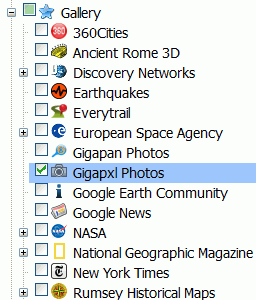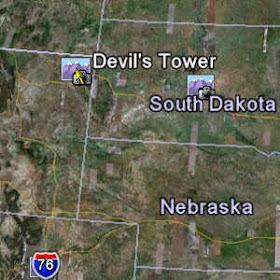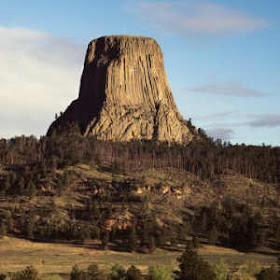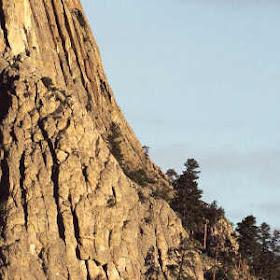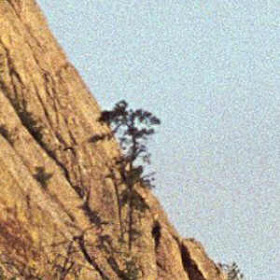kw: book reviews, nonfiction, astronomy, planets
I miss Pluto. I learned the names of the nine planets when I was very young, and a few years later, with my father's help, built a 3" (76mm) diameter reflecting telescope from a kit. I still have it, and still use it. It is really too small to do much with the planets, but I've seen them all but Pluto—at 15th Magnitude, it is beyond the reach of any visual instrument smaller than 12.5" (320mm).
A little over three years ago, the International Astronomical Union (IAU) voted to approve a contentious proposal to refer to Pluto and a number of other small orbs as "dwarf planets", but not "real planets". Though the vote seemed a landslide, many were voting "Yes" just to put an end to the bickering. The minority in that vote is, however, vocal, dedicated, and not inclined to give up. And now one of their number, Alan Boyle, has written
The Case for Pluto: How a Little Planet Made a Big Difference.

One big difference was that, during the time Pluto was still known as the Ninth Planet, the New Horizon mission was proposed, funded (plenty of back-and-forth there, though), and launched. Shortly before the launch five years ago, this image was taken with the Hubble Space Telescope. The astronomers were aiming for a good, up-to-date image of Pluto and Charon; the two littler moons were a bonus! This is a NASA image. Related images can be found
here.
In his book, Dr. Boyle recounts the history, not just of Pluto, but of the larger non-naked-eye planets Uranus and Neptune also.
By the way, Uranus
can be seen with the naked eye when it is in opposition, only from a very dark locale; you have to be young and know exactly where to look. It was never identified before telescopic discovery. It was apparently seen and charted a few times, but nobody connected the observations of an obscure 6th magnitude "star" that seemed to be gone the next time you looked for it. But it is an easy object with binoculars or a small telescope. Now, Neptune, well, that's hard with a 3-incher.
Another aside: why do I say you have to be young to see Uranus? After the age of 30 or 35, the eye's iris won't open bigger than 5 or 6mm diameter. It takes a full 7mm opening to see 6th magnitude objects.
Back to the book: the author also recounts in some detail how important the designation of Pluto as a planet has been to getting funding approved and finally appropriated for the New Horizons mission. This mission is seen as doubly important now that Pluto is recognized as the first-discovered of a new class of object, a member of the Kuiper Belt of icy-rocky bodies. A major class of these Trans-Neptunian Objects (TNO's) are being called Plutinos.
This Wikipedia article is a comprehensive presentation of the TNO's and their kin.
Strictly speaking, Pluto is a Cis-Neptunian object; its orbit crosses inside that of Neptune. This, to me, is an important consideration regarding the definition adopted by the IAU which has two parts:
- A planet is round because its self-gravity is great enough to overcome the strength of the materials that compose it.
- A planet has dynamically cleared the area of its orbit of other bodies.
That second part is what got both Pluto and the asteroid Ceres excluded from being "Planets". Ceres dwells among the asteroids, which seem to cross its orbit with abandon, and Pluto not only dwells among many Plutinos (which share its 3:2 resonance with Neptune), but also in the vicinity of Neptune itself. Here's the kicker; Neptune hasn't cleared out the Plutinos, many of which cross its orbit (the Cis- ones), so is it also not a planet????
Furthermore, dynamical computer simulations of the early Solar system indicate that Jupiter did the clearing of the entire inner system, particularly Mercury's orbital vicinity, while gradually being pushed outward to its present orbit. We don't see that Mercury actually did the clearing job; so is it also not a planet????
Finally, bodies as large as Mars, or maybe larger, could lie at quite great distances, say 1000 AU (~150 billion km) or more. We'll see how detectable they might be in a moment. Almost by definition, the slow pace of things out there has prevented any orbit-clearing. How big must a body be to be a "real planet" at such distances?
Dr. Boyle makes a strong case for a different kind of look at the situation. The Solar System has three classes of spherical objects, other than the Sun:
- Four rocky planets, which are all Sunward of the main asteroid belt.
- Four gaseous giant planets, which are all beyond the main asteroid belt.
- An unknown number of rocky/icy orbs (and you can include the larger moons of Earth, Jupiter and the other giants here), including Ceres, Vesta and Pluto, and now Eris (slightly larger than Pluto), Sedna, Makemake and others discovered very recently. By the IAU resolution, these are called "dwarf planets".
Other than the rocky four and the giant four, we now know that there are many, many of the self-gravitating spheres, and that poor, denigrated Pluto represents the majority consituency! At this point, no matter what "kind" of planet you designate Pluto, it is of critical importance as the first member of a very exciting class of object. We have as much to learn from them as we do from the larger bodies; indeed, concerning the early history of the Solar System, we have the most to learn from the more distant bodies.
While reading, I got interested in how one determines the parameters, the search space, of a distant object. With a little figuration, I got this much:
- Velocity in a circular orbit is proportional to the inverse square root of the orbit's radius. This radius for Jupiter is 5.2 times that for Earth. 1/5.2 = 0.192; √0.192 = 0.4385; that times Ve (29.8 km/s) is 13.1 km/s, the measured orbital velocity of Jupiter.
- Subtract a body's velocity from that of Earth and divide the result by the distance from Earth to the body. For bodies beyond Neptune, you can pretty much ignore the body's velocity, it is less than 18% of Earth's velocity. You can also come pretty close by taking the distance from the Sun; one AU out of thirty or more is pretty small. So for Neptune, 29.8 / 4.5 billion = 6.6x10-9
- For such distant bodies, multiply by the number of seconds in an hour or a day, so you can get hourly or daily parallax. For Neptune, the daily parallax is 0.00057.
- Take the arcsine of that: 0.033° in this instance, or 1.97 arcminutes or 118 arcsec.
For the "back edge" of the scattered disk, the tattered end of the Kuiper belt, R is about 150AU or 22.5 billion km. V = 2.4 km/s so let's ignore it. The daily Earth motion is 29.8x86,400 = 2.57 million km. Divide that by 150 AU to get 0.000114. Arcsin of that is 0.0066° or 0.39' or 24". That is quite large, so sets of images (we don't use glass plates any more) taken a day apart, looking for a "blink" of 24 arcseconds or greater can detect any Kuiper Belt Object.
How about brightness? If you are just looking for Pluto-size and larger, start with Pluto's Magnitude of 15 at a distance of 40 AU. Brightness decreases as the fourth power of distance (square once for the inverse-square law for sunlight, and square again for the apparent area of the object). At 150 AU we get (40/150)
4 = 0.005. Turn that into magnitudes, and it adds 5.7, making a "back-edge" Pluto-sized KBO a 21
st Magnitude object.
Modern telescopes can record objects as dim as Mv=30 or so. If we're generous to add ten magnitudes to our distant KBO, we figure thus: ten magnitudes is 1/10,000, and the fourth root of that is 10. So the most distant "Pluto" we might see would be 1,500 AU away. In addition, back at the "back edge", ten magnitudes figures out to a diameter ratio of 100, so a body as small as 15-20 km, anywhere in the KB, ought to be findable with current equipment! One way to make a body more detectable is to drive the telescope at its expected angular speed, just a whisker different from the siderial rotation of the sky. A body moving at that speed will be a point. This is most used for asteroid detection, but I suspect it is also being used for KBO's.
Now, many astronomers expect that there are larger bodies 'way out there. How far away could we see a Jupiter? At 40 AU Jupiter's magnitude would be 7. 31-7=24 magnitudes, which works out to brightness factor of 4 billion, whose fourth root is 251. 251x40 = 10,040, which puts such a body in the nearer parts of the Oort cloud.
At present, it takes exceptional equipment to reliably record a 31-Magnitude object. It will take the next generation of space telescopes to find the more distant ones. But equipment we have already is sufficient for finding thousands of dwarf planets beyond Neptune. The more of these we find, the more important Pluto becomes. Also, we gather more potential targets for New Horizons. We need to be looking now for KBO's beyond Pluto which will be well situated for observation by the spacecraft after it flies by Pluto and Charon, and heads into the rest of the Kuiper Belt.
It is currently moving at 18 km/s, in a region near Saturn where orbital velocities are less than half that. It'll still be moving above 10 km/s when it passes Pluto, but even at that rate, it will be in the 100-AU-wide Kuiper Belt for about fifty years.
So the way I see it, echoing the author, Pluto has been promoted. No longer the Ninth Planet, it is the First TNO, just as Ceres is now promoted to First TMO (Trans-Mars Object). Pluto, it is nice to have you back!

































